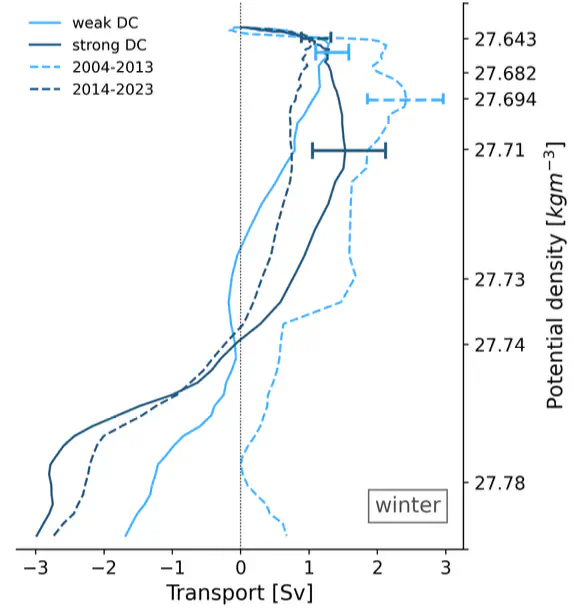 Seasonal overturning in density space for strong and weak deep convection (DC) composites (solid lines) and both decades separately (dashed lines).
Seasonal overturning in density space for strong and weak deep convection (DC) composites (solid lines) and both decades separately (dashed lines).Abstract
This thesis investigates the variability of the local overturning circulation in the Labrador Sea over the past two decades, focusing on the influence of deep convection. Deep convection plays a crucial role in the ocean by facilitating the formation of Labrador Sea Water, significantly contributing to deep ocean ventilation and potentially impacting the meridional overturning circulation both locally and across the Atlantic. Utilizing Argo float data and optimal interpolation, I construct seasonal and decadal composites to analyze the impact of deep convection on local overturning at the AR7W line across the central Labrador Sea. My analysis reveals that strong deep convection years are associated with more vigorous overturning, especially in spring, where maximum transports of 3.7 Sv attributed to the formation of Labrador Sea Water occur, centered at 27.73 kg m$^{−3}$. In depth space, the most substantial overturning of 1.7 𝑆𝑣 occurs in winter, potentially driven by sinking in the boundary current, although this is not consistently linked to convection intensity. The results also suggest a decadal variability in winter convection, indicating that overturning strength fluctuates over longer time scales due to other processes. These findings emphasize the crucial role of deep convection in local overturning dynamics and underscore the necessity for long-term observational datasets to enhance our understanding of deep convection and its future impacts.